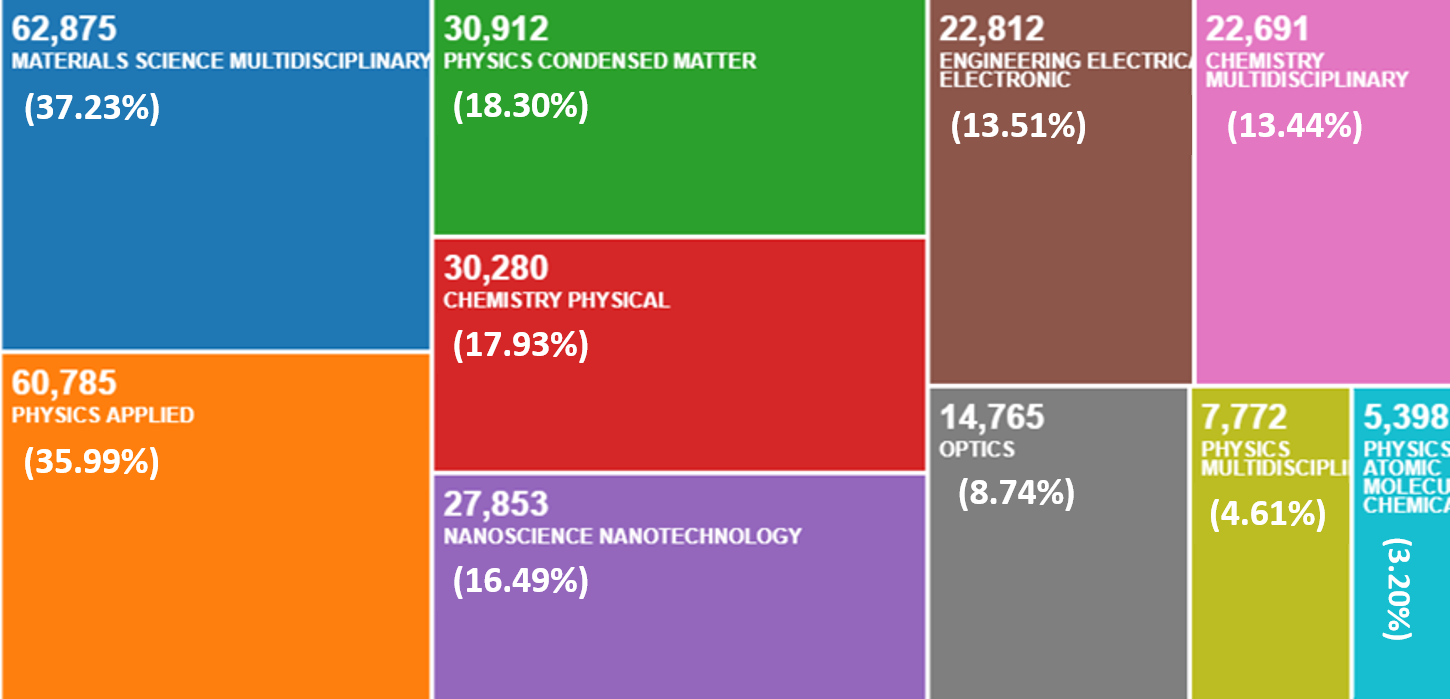Taiwan AESA Plays an Important Role in Global LEO Applications

- ENGINEERING & TECHNOLOGIES
- Text & Image
- April 19,2021
Semiconductors can be found everywhere in our living environments that controlled by semiconductor chips. The development of semiconductors has changed the way we live. Meanwhile, the semiconductor and microelectronics industries are the foundations of many emerging technologies and applications. For instance the devices using in network-layer gateways, cloud computing architecture, and the technological epidemic prevention measures recently. They are all depend on the foundation providing by semiconductor technologies (Lu Jia Rou, 2018). Taiwan’s history of research and development (R&D) in semiconductor technology stretches back more than 30 years. With the support and promotion of the government, Taiwan has built a complete semiconductor industry structure and supply chain. Amidst the impacts of the COVID-19 epidemic and the US-China rivalry in tech , the robustness and importance of Taiwan’s semiconductor industry chain have shone through all the stronger.
Global semiconductor research and development trends
Publication trends among semiconductor papers worldwide were investigated through examination of Web of Science data. In 2010, 12,608 semiconductor-related papers were published around the world. By 2020, that number had increased to 18,813 papers, for a total of 168,866 papers published over this period. In terms of the countries where the papers were published, from 2010 to 2020, the top three countries in terms of semiconductor-related paper production were China (46,877 papers), the United States (32,625 papers) and Japan (13,744 papers). Taiwan ranked 10th among 128 countries and regions in the world, with a total of 6,041 papers published. In terms of the number of papers published per capita, Taiwan outperformed other major countries such as China, the United States, and Japan. Among the nearly 170,000 semiconductor-related papers published worldwide in the 2010-2020 period, the fields of study that accounted for the largest percentage of papers published were material science (62,872 papers, accounting for 37.23% of the whole) and applied physics (60,782 papers, or 35.99% of the whole). See Figure 1. This shows that recent studies in the semiconductor field have focused on semiconductor material optimization and physical applications.

Figure 1: Top 10 fields of study for semiconductor-related papers published worldwide, 2010-2020 (source: Web of Science).
Advanced research on semiconductor materials
Silicon is the second most abundant element in the Earth's crust and has been researched by scientists for a long time. Therefore, the fundamental research, design and technologies of silicon are well developed, but the material has almost reached its theoretical performance limits at this point. To extend Moore’s Law (the number of transistors on a microchip double every two years) and improve the performance of electronic components, researchers are researching new materials that can replace Silicon, which has almost met its physical limit. Low-dimensional semiconductors are key to overcoming the physical limits presented by continued device scaling. To support research and development on low-dimensional semiconductors, the Ministry of Science and Technology has launched the Angstrom-Generation Semiconductor – Advanced Semiconductor and Quantum Technology R&D Project. The project aims at preparing Taiwan for the advanced devices and materials, advanced process inspection technologies, and quantum device sub-systems that will be needed for the next decade, and to explore new innovative solutions that will revolutionize the existing framework.
In addition, Silicon materials used in 5G/B5G and electronic vehicles cannot meet the need of emerging technologies. WideBandgap (WBG) power semiconductors, such as silicon carbide (SiC) and gallium nitride (GaN), with higher thermal conductivity, breakdown fields, and electron saturation velocities than silicon, will become the key materials for the next generation of power electronic devices. Currently, Wide Bandgapandgap semiconductors are primarily applied to energy-saving products, such as LED lighting, electric cars, and smart grids, as well as in industrial and aerospace applications that require power conversion efficiency. For this reason, countries such as the United States, Japan, and China treat research on wide-bandgap power semiconductors as national development projects (Science & Technology Policy Research and Information Center, 2017). The Ministry of Economic Affairs, Taiwan has initiated the Angstrom-Generation Semiconductor – Advanced Technology and Industrial Chain Self-Development Project to promote R&D and industrial applications for WideBandgap power semiconductors and the improvement of the whole industrial chain.
Opportunities the COVID-19 epidemic brings for Taiwan's semiconductor industry
The continual development of technology means that the role of semiconductors in high-tech products becomes more important every day. However, due to the impact of the COVID-19 epidemic, many countries’ industrial chains are at a near-standstill. Taiwan, on the other hand, has been able to show growth because of the island’s excellent epidemic prevention performance and robust semiconductor industry supply chain. The COVID-19 epidemic has halted the global supply chain for information and communications electronics; but at the same time, it has increased demand for consumer electronics due to the epidemic prevention controls (such as curfews and travel restrictions) implemented by many countries. And this has promoted the demand in the supply chain.
In the post pandemic era, telecommuting, distance learning, home entertainment, etc., have become essential parts of our daily lives. Taiwan's IC design businesses have also benefited from the growth in demand for Chromebooks, tablets, servers, TVs, and e-sports caused by the epidemic, which has driven output value for Taiwan’s semiconductor industry. Last year (2020), the total output value of Taiwan’s semiconductor industry reached NT$3.22 trillion, which is an annual increase of 20.9% (Industrial Value Chain Information Platform, 2021; Science & Technology Policy Research and Information Center, 2021). In general, Taiwan’s semiconductor industry performed well in 2020 despite the COVID-19 epidemic. In 2021, Taiwan should take advantage of global supply chain reorganization and continue to strengthen the development of information and digital industries, and integrate 5G, data centers, and applications such as high-performance computing (HPC) and artificial intelligence (AI). Putting all these efforts together, Taiwan could be transformed into a information technology base for next generation.
Conclusion
The semiconductor industry is known as Taiwan’s “Nation-Protecting Industry”, and Taiwan possesses great strengths in semiconductors. In the post pandemic era, how to leverage existing advantages and integrate areas such as 5G, digital transformation, biomedicine, and information security will be the keys to future development. The government’s resources invested through the aforementioned projects will support advanced technologies development. By integrating Taiwan’s advantages in advanced electronic devices, semiconductors, and information and communications industries, the country can also continue to cultivate more talents in different fields in order to develop the next generation of semiconductor materials and high-tech industries.
References:
Department of Engineering and Technologies, Ministry of Science and Technology, “Angstrom-Generation Semiconductors - Advanced Semiconductor and Quantum Technology R&D Project” (Review No. 110-1901-04-20-04). September 2020.
Terry Tsao, “Key Development Trends for Taiwan's Semiconductor Industry in the Next Decade”. Business Next, June 11, 2020.
Industry Value Chain Information Platform, “Introduction to the Semiconductor Industry Chain”. Source link: https://ic.tpex.org.tw/introduce.php?ic=D000 (2021/3/31).
Department of Industrial Technology and Industrial Development Bureau, Ministry of Economic Affairs, “Angstrom-Generation Semiconductor – Advanced Technology and Industrial Chain Self-Development Project” (Review No. 110 1401 04 20 01). September 2020.
Luo Chi-Wei, “Analysis on the Application of Wide-Bandgap Semiconductor GaN to Microwave and Radio Frequency Fields”. Research Portal, Taipei: National Applied Research Laboratories (NARLabs), September 4, 2017.
Koo Horng-Show, “Development Trends in the Global Semiconductor Industry”. Straits Business Monthly, Taipei: Straits Exchange Foundation, September 2020.
iKnow, “Taiwan’s IC output value exceeds NT$3.22 trillion in 2020, for growth of 20.9%”. Taipei: National Applied Research Laboratories (NARLabs), February 23, 2021.
STAY CONNECTED. SUBSCRIBE TO OUR NEWSLETTER.
Add your information below to receive daily updates.




